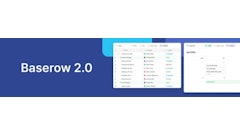
From economic uncertainty to climate-related disruptions, today’s supply and demand chains operate in an environment of relentless volatility. Traditional forecasting tools rooted in static historical averages are increasingly outmatched by the pace and complexity of change. In this environment, a new kind of AI is emerging, built not just to predict but also to understand markets as dynamic systems.
These goal-driven, explainable models, powered by large market models (LMMs), are designed to absorb vast streams of real-time data, identify deep interdependencies, and recommend actions aligned with business objectives. When implemented effectively, this new AI architecture enables air cargo and logistics operators to navigate uncertainty with greater confidence, precision, and speed.
1. From historical to real-time: What sets next-gen forecasting apart
Legacy forecasting systems typically rely on simple regressions of past demand and pricing data. These approaches assume tomorrow looks like yesterday, an assumption that rarely holds true in today’s market, where external and unprecedented shocks can ripple across the supply chain with zero notice.
Next-gen AI solutions anchored in LMMs mark a fundamental departure from this paradigm. These models are not constrained by historical templates; they continuously learn and adapt from a wide spectrum of live signals: weather patterns, geopolitical and socio-economic events, capital market signals, competitive pricing shifts, operational disruptions, and even consumer sentiment. This enables them to generate a live, probabilistic understanding of future demand and supply dynamics.
What sets LMMs apart is their ability to holistically model market interactions. They don’t just predict demand in isolation; they forecast how competitors might react, how supply constraints will influence price sensitivity, and how one product’s scarcity might drive demand toward substitutes.
These models are also designed with transparency in mind: unlike traditional black-box systems, LMMs can explain why they made a certain forecast or recommendation, enabling decision-makers to trust, challenge, and act with clarity. Crucially, these models continuously learn from every new interaction, automatically improving their accuracy and responsiveness without requiring manual retraining.
2. Smarter resource allocation: Reducing risk and waste
In logistics and air cargo, operational efficiency depends on matching resources to market demand in real time. Misalignment, whether over-capacity or under--utilization, translates to higher costs and lower margins.
LMM-powered forecasting helps close that gap. These models enable smarter deployment of assets, whether aircraft, cargo space, or ground staff, by predicting demand and optimizing actions at a highly granular level, down to individual seats, pallets, or transactions. This precision helps uncover micro-opportunities and eliminate hidden inefficiencies that coarse forecasting often misses. More importantly, they respond not in hours or days, but in milliseconds, adjusting recommendations as new data flows in. This kind of automation doesn’t just cut costs, it builds resilience by enabling organizations to respond instantly to disruptions, preventing small issues from escalating into systemic breakdowns.
This agility reduces idle assets, mitigates service disruptions, and even supports sustainability goals. For instance, better fuel planning and route optimization reduce unnecessary flights, minimizing both emissions and costs.
Another key advantage: this level of intelligence doesn’t require rebuilding infrastructure. Many LMM-based systems are designed for seamless integration with existing IT stacks via APIs or cloud-based services, minimizing onboarding friction and enabling faster ROI.
3. Forecasting as a strategic lever, not just an operational tool
Forecasting has traditionally been confined to the back office, supporting supply planning or seasonal budgeting. That mindset is changing fast.
With the rise of LMMs, forecasting becomes a strategic lever. By embedding predictive insights across pricing, inventory, procurement, and network operations, these models unlock faster decision cycles and tighter alignment between functions - replacing fragmented planning with a holistic coordinated, real-time execution.
Rather than serving as passive input, forecasts now shape proactive strategies - and critically, these insights are consumed not just by human planners, but by automated systems that can act immediately and at scale. This shift enables not only better decisions, but also vastly more of them, continuously and across the full breadth of operations.
The secret lies in the goal-driven nature of the models. LMM based systems are not just prediction engines - they are decision-making systems built to maximize revenue, minimize cost, or optimize utilization, depending on the desired outcome. This alignment transforms forecasting from reactive guesswork into a highly intelligent enterprise function that moves faster than the market.
Conclusion
In a world where unpredictability is the only constant, supply chain leaders need more than historical averages and gut feelings. They need systems that can sense, understand, and act on emerging conditions at market-moving speed.
LMMs offer that edge. By integrating rich, real-time data streams and modeling the entire economic ecosystem - not just isolated variables - they empower companies to forecast with accuracy, explainability, and purpose.
For air cargo operators and broader logistics networks, the message is loud and clear: forecasting is no longer just about planning. It’s about competing. And those equipped with LMM-powered intelligence will be best positioned to thrive in disruption and lead in the next era of global supply chains.




















